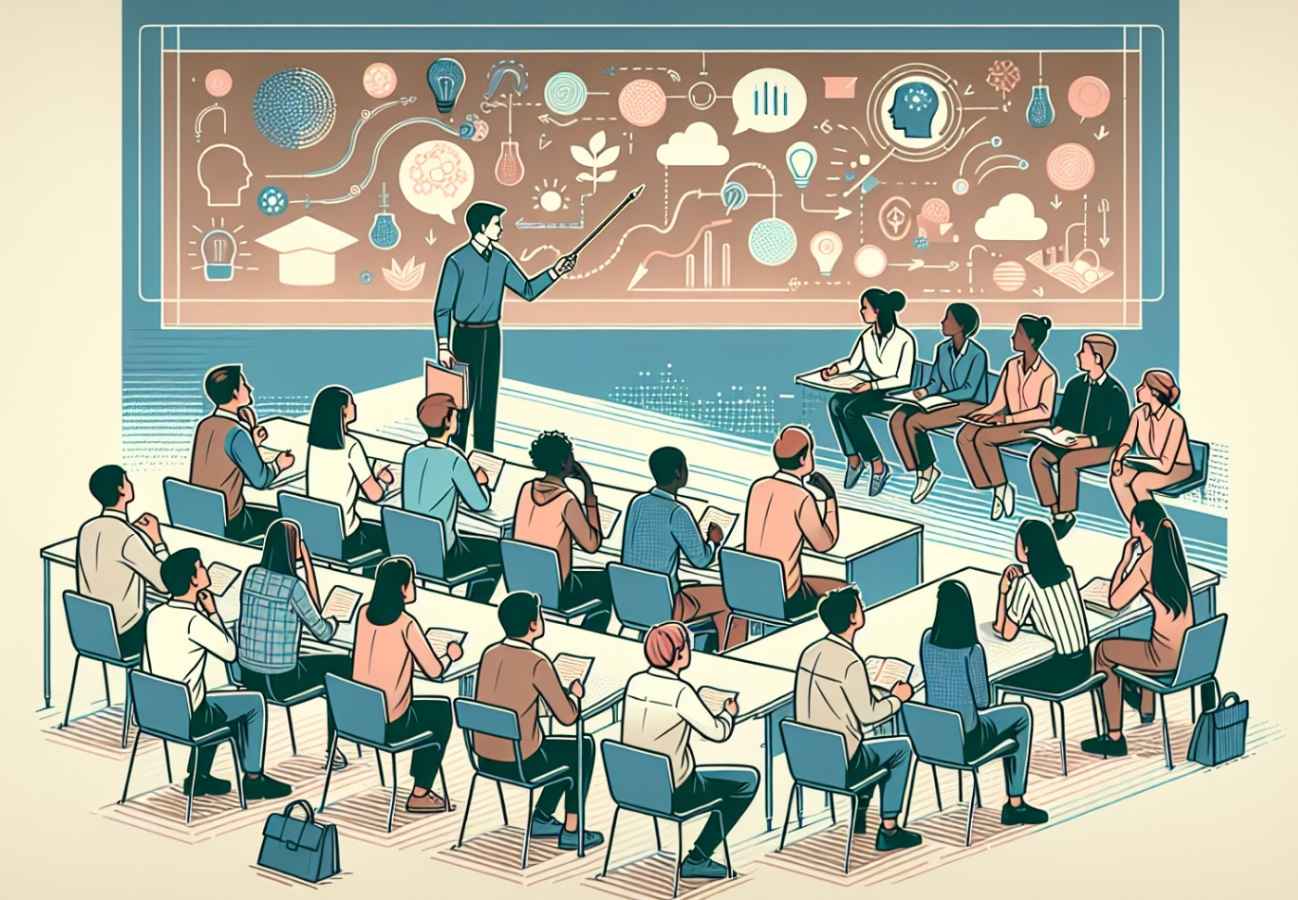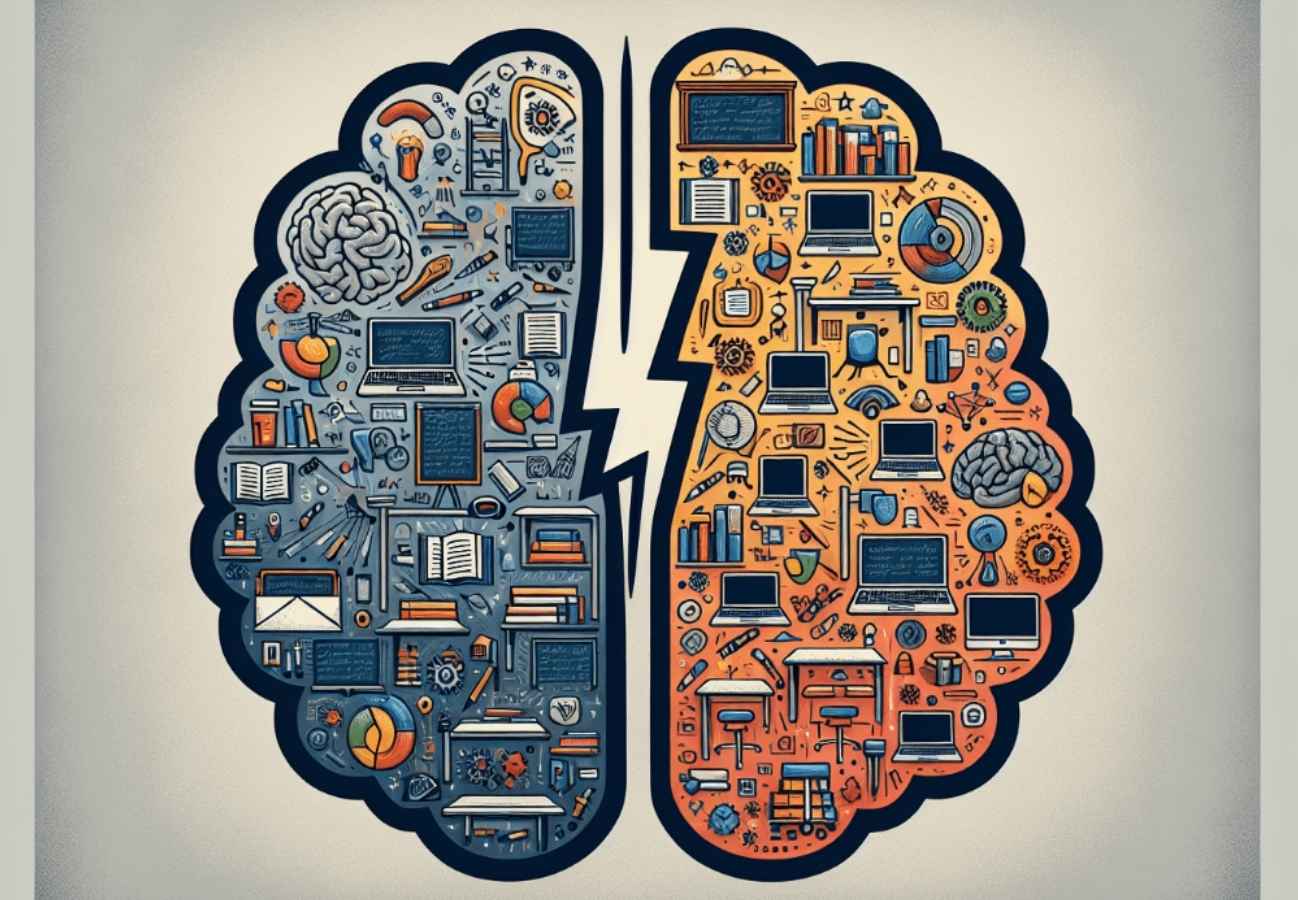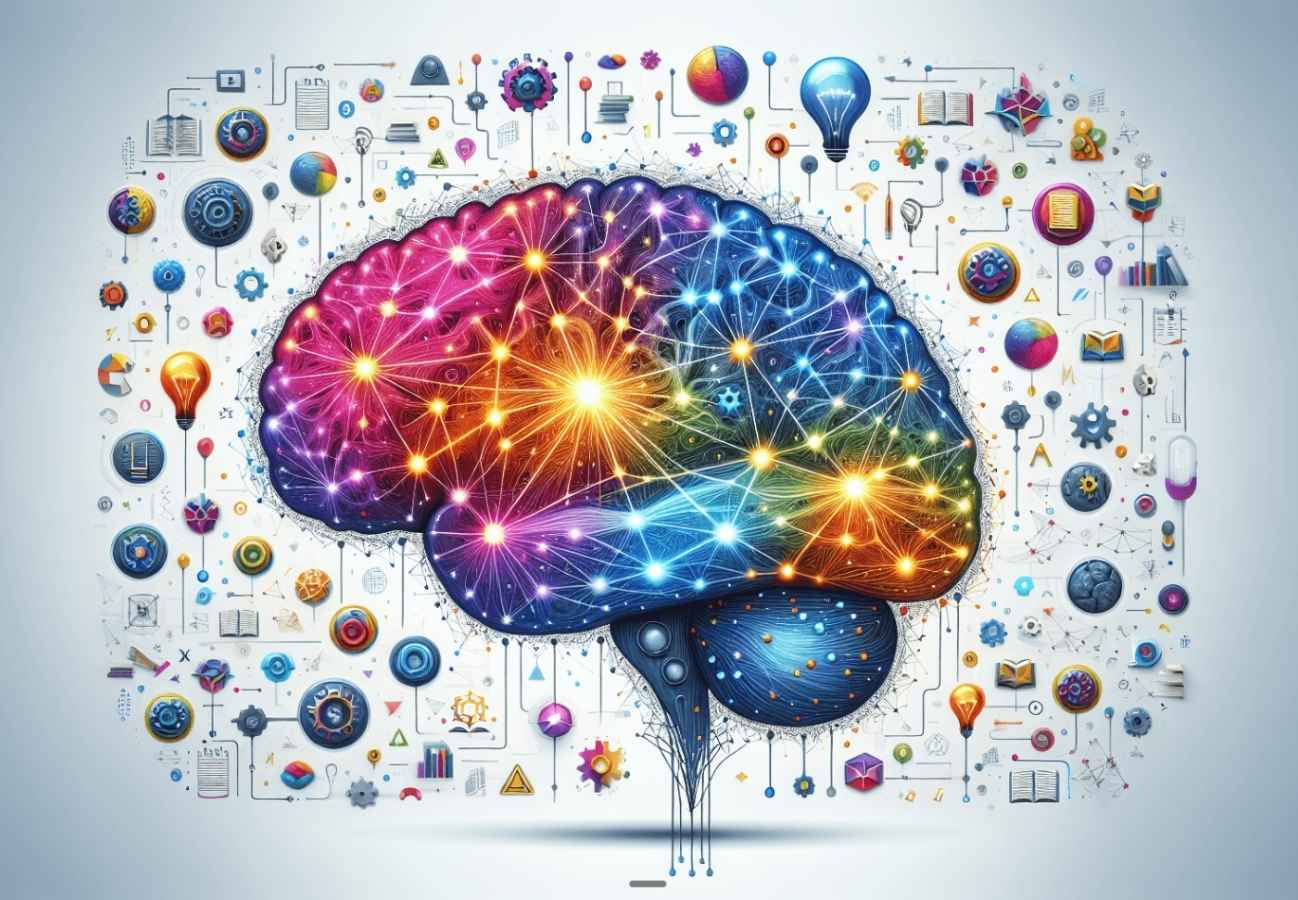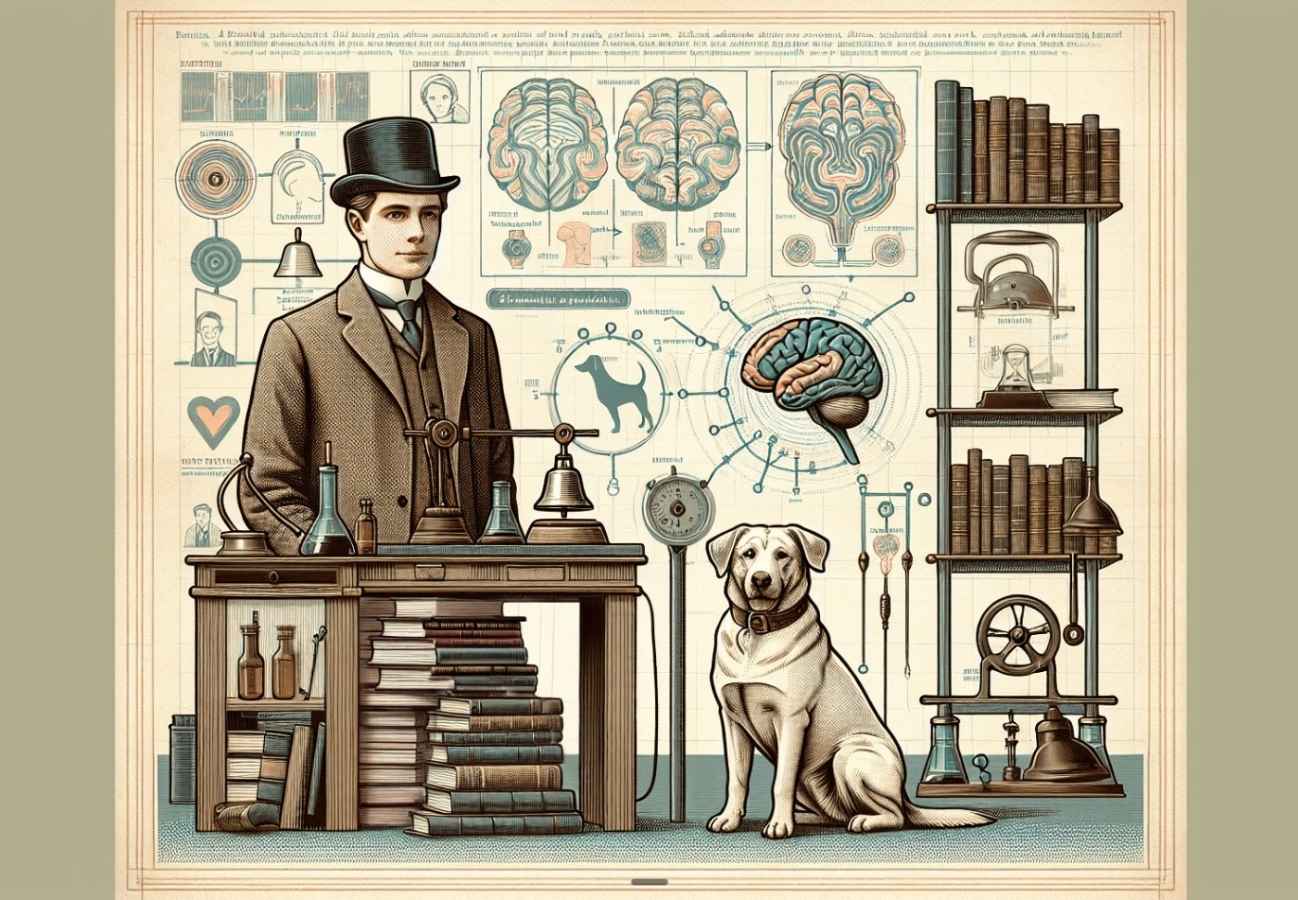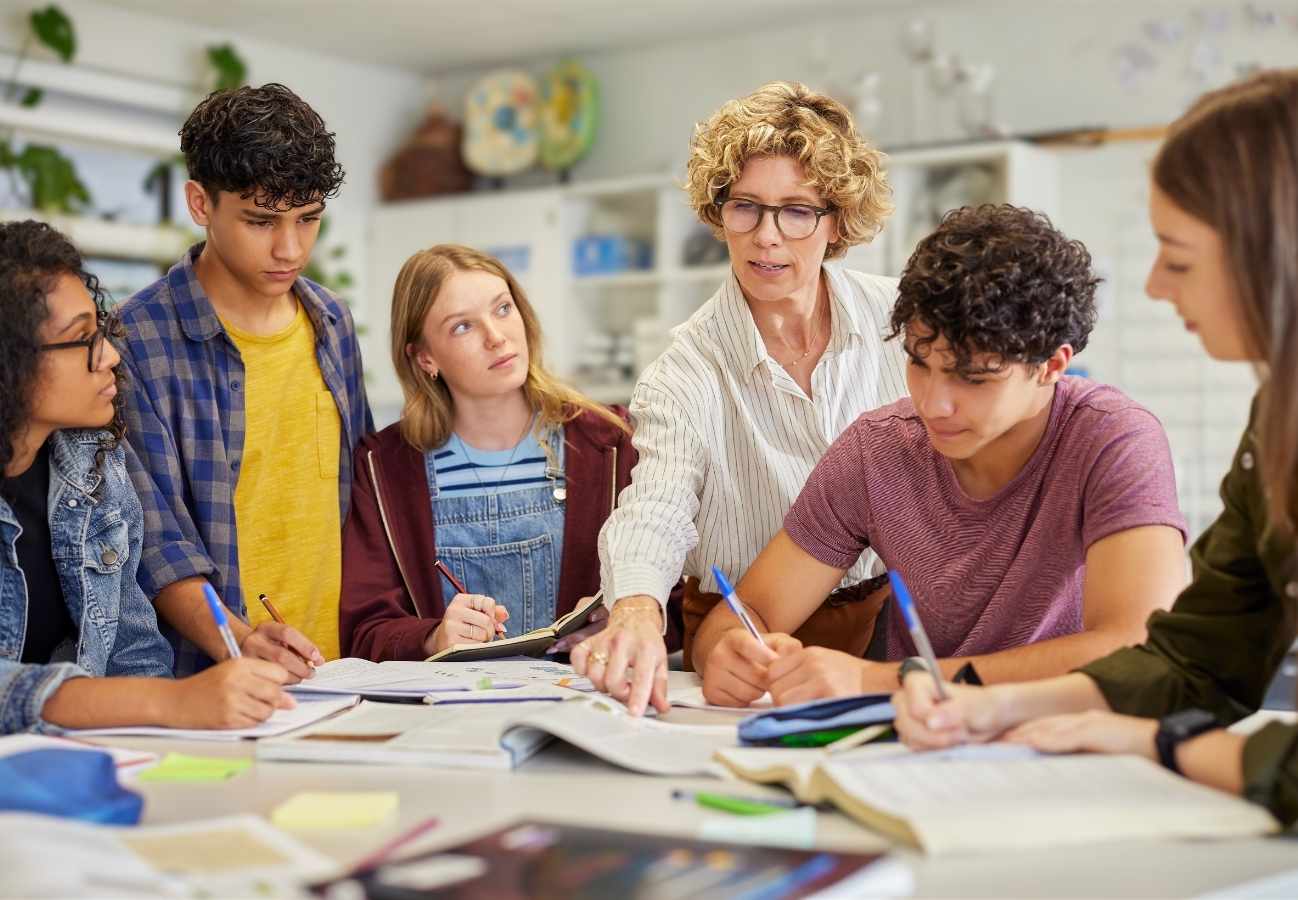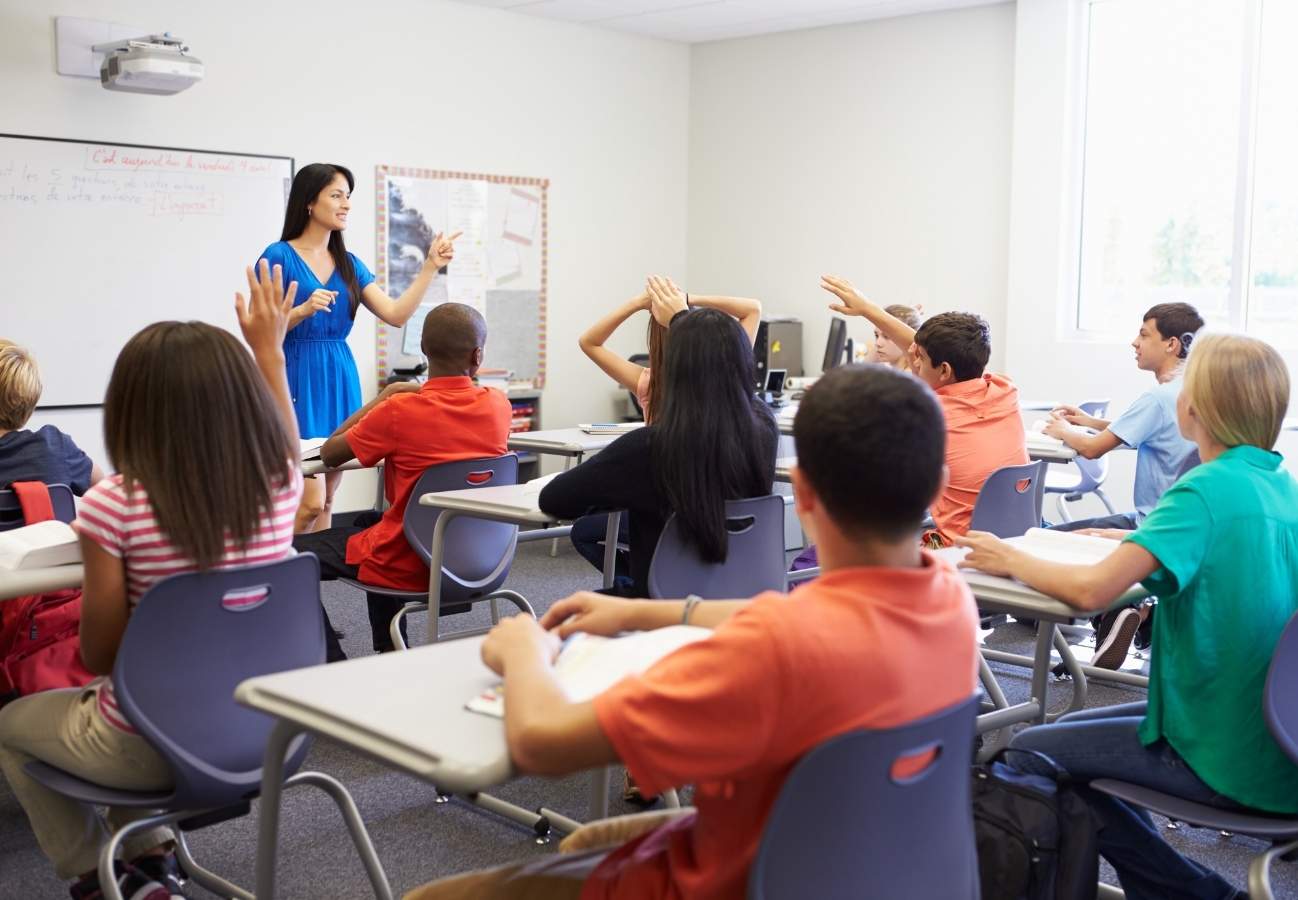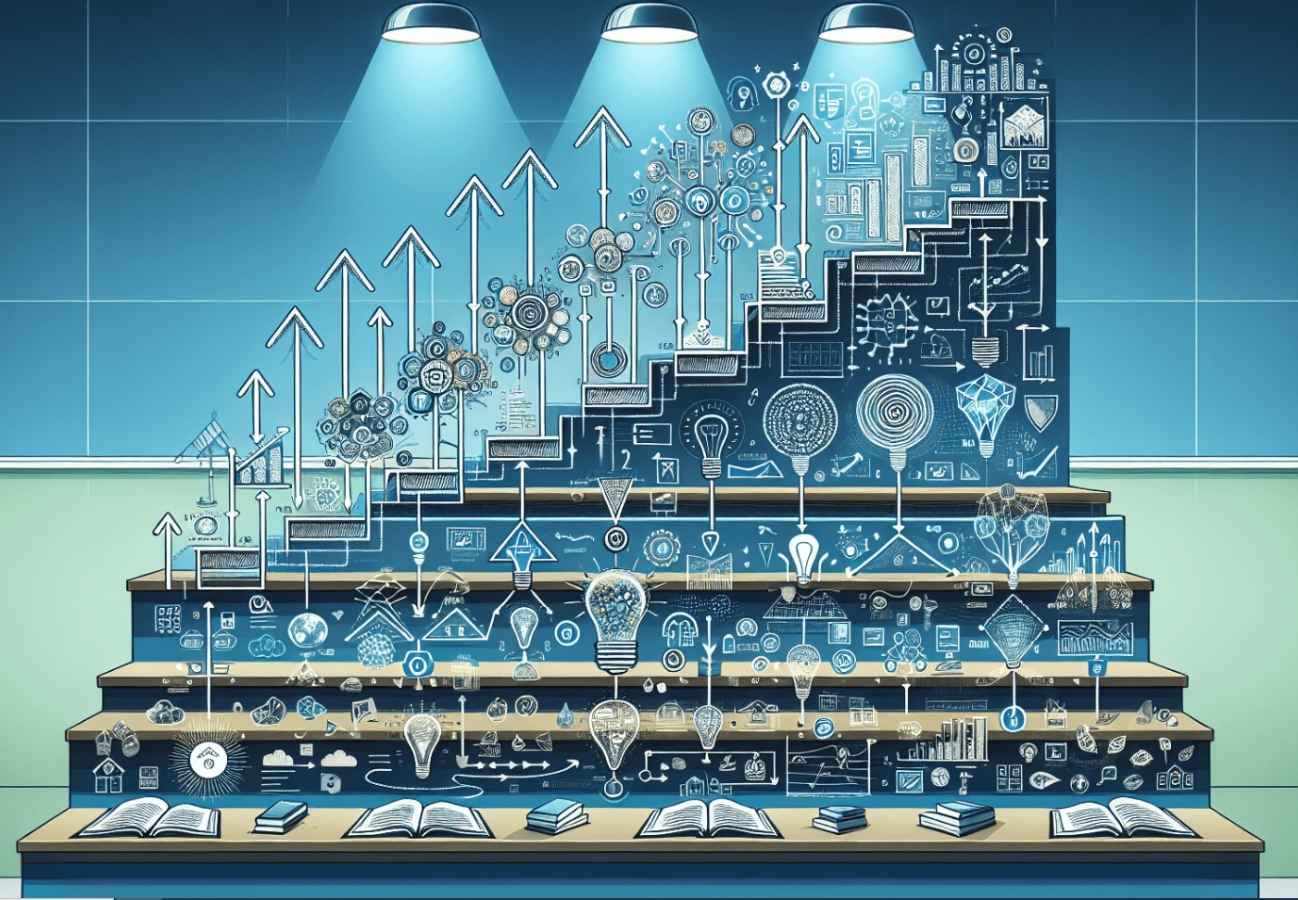Learning Through Observation
Children learn to be aggressive by watching others be aggressive. Students develop confidence by observing peers succeed. Teachers shape behavior not just through what they teach, but through how they act. This is social learning theory—and it fundamentally changed how we understand education.
Albert Bandura's social learning theory demonstrates that people learn by observing others' behaviors and their consequences. Unlike behaviorist theories that require direct reinforcement, Bandura showed that learning happens through watching, imitating, and modeling—making every classroom interaction a potential learning moment.
The Bobo Doll Experiment: How We Know Social Learning Works
In 1961, Bandura conducted the most famous demonstration of observational learning. The Bobo doll experiment revealed something profound: children don't need rewards or punishments to learn new behaviors. They just need to see someone else do it.
The Eperiment Setup: Bandura and his colleagues divided 72 children (ages 3-6) into three groups. The first group watched an adult act aggressively toward an inflatable clown doll called Bobo—punching it, hitting it with a mallet, and shouting phrases like "Sock him in the nose!" The second group observed an adult playing calmly with toys, ignoring the Bobo doll completely. The third group saw no adult model at all.
What Happened: After watching the adult, each child was taken to a room filled with attractive toys - including a Bobo doll - and told they couldn't play with the best toys. Then researchers observed what happened.
Children who witnessed aggression reproduced specific aggressive acts they'd observed - the same punches, the same mallet strikes, even the same phrases. Children in the non-aggressive and control groups showed significantly less aggression. The results were clear: children learned aggressive behavior simply by watching someone else model it.
Why It Matters: This experiment challenged the dominant behaviorist view that learning required direct reinforcement. Bandura demonstrated that observation alone could change behavior. For educators, this means students are constantly learning from every behavior they observe in the classroom—from teachers, from peers, from media. The question isn't whether modeling happens. It's what behaviors we're modeling.
How Social Learning Theory Works: The Four Processes
Bandura identified four cognitive processes that determine whether observational learning occurs effectively. Understanding these helps educators maximize positive modeling while minimizing negative influences.
1. Attention
Learners must notice and focus on the behavior being modeled. Not every behavior gets attention. Students pay attention based on:
- The model's characteristics (competence, attractiveness, similarity to observer)
- The behavior's distinctiveness or novelty
- The observer's current needs and interests
- Environmental factors (distractions, competing stimuli)
In practice: Teachers gain student attention through varied instructional methods, clear demonstrations, and relevant examples. Simply showing something doesn't guarantee students will attend to it. Effective modeling requires capturing and maintaining focus on specific behaviors worth learning.
2. Retention
Observed behaviors must be stored in memory for later reproduction. Students encode information through:
- Mental imagery (creating visual representations)
- Verbal descriptions (translating actions into words)
- Rehearsal (mentally practicing the behavior)
In practice: Teachers support retention by encouraging students to verbalize what they've observed, create mental pictures of processes, and practice immediately after demonstration. The phrase "see one, do one, teach one" captures this principle—watching leads to remembering when paired with active cognitive engagement.
3. Reproduction
Learners must possess the physical and cognitive abilities to reproduce observed behaviors. This process involves:
- Physical capabilities to perform the action
- Prerequisite skills needed for complex behaviors
- Opportunities to practice and refine performance
In practice: Effective educators provide scaffolding—breaking complex behaviors into manageable steps and ensuring students have foundational skills before attempting advanced tasks. Reproduction often requires multiple attempts and feedback before the observed behavior becomes part of the learner's repertoire.
4. Motivation
Students need reasons to perform observed behaviors. Motivation comes from:
- Vicarious reinforcement: Observing others rewarded for behavior
- Direct reinforcement: Experiencing positive outcomes firsthand
- Self-reinforcement: Internal satisfaction from achievement
In practice: Students observe how behaviors lead to success, recognition, or problem-solving effectiveness, then choose whether to adopt these behaviors. This extends beyond simple reward systems. When students see classmates praised for asking thoughtful questions, they learn that question-asking leads to positive outcomes—increasing the likelihood they'll ask questions themselves.
Self-Efficacy: Bandura's Most Powerful Contribution
Self-efficacy represents Bandura's most influential insight for education. It describes a person's belief in their ability to successfully perform specific tasks or achieve particular goals.
Students with high self-efficacy:
- Approach challenges with confidence
- Persist through difficulties
- Recover quickly from setbacks
- Set ambitious goals and work toward them
Students with low self-efficacy:
- Avoid challenging tasks
- Give up easily when facing obstacles
- Experience higher stress and anxiety
- Set lower goals or avoid goal-setting entirely
The Four Sources of Self-Efficacy
Mastery Experiences provide the strongest foundation. When students succeed at appropriately challenging tasks, confidence grows. Teachers build mastery by structuring learning experiences that ensure genuine success while maintaining rigor— - not by making everything easy, but by making challenge achievable.
Vicarious Experiences occur when students observe peers succeeding at similar tasks. Seeing classmates overcome challenges builds confidence that "if they can do it, I can too." This highlights the importance of diverse role models and visible peer learning. When struggling students see similar peers succeed, self-efficacy increases more than watching expert performance.
Verbal Persuasion involves encouragement and feedback from trusted sources. Effective feedback focuses on effort, strategy, and improvement rather than just outcomes. "You worked hard on that problem-solving approach and it paid off" builds self-efficacy better than generic praise like "good job."
Physiological and Emotional States influence self-efficacy through how students interpret their physical responses to challenges. Nervousness before a presentation, excitement about a project, or fatigue during difficult work all send signals about capability. Teaching students to reframe anxiety as excitement or interpret effort as growth supports self-efficacy development.
Social Learning Theory in the Classroom
Understanding social learning theory transforms instructional practice, classroom management, and student development.
Teachers as Models in Social Learning
Teachers serve as primary models for both academic and social behaviors. Students observe not just what teachers teach, but:
- How teachers handle mistakes and frustration
- How they interact with students who struggle
- How they approach problem-solving and critical thinking
- How they demonstrate curiosity and learning
Effective modeling requires intentionality. Think-aloud protocols during problem-solving, demonstrating resilience when technology fails, showing genuine excitement about discovery - these modeled behaviors become templates students unconsciously adopt.
The gap between what teachers say and what they do teaches students powerful lessons. When teachers preach growth mindset while showing frustration at student errors, students learn the behavior, not the words.
Peer Modeling in Action
Structured peer observation creates multiple pathways for learning:
- Think-pair-share lets students observe peer reasoning processes
- Student presentations provide models for communication and organization
- Collaborative problem-solving makes thinking visible through peer interaction
- Peer teaching allows students to both model for and learn from classmates
Video demonstrations, gallery walks, and peer feedback protocols all leverage social learning principles. The key lies in helping students identify specific behaviors, strategies, and attitudes worth adopting - not just exposing them to peer work without guidance.
Explore more on Collaborative Learning
Building Self-Efficacy Through Instruction
Systematically building student self-efficacy requires thoughtful design:
Set appropriately challenging goals. Tasks too easy don't build confidence; tasks too hard destroy it. The sweet spot—achievable with effort—creates mastery experiences that strengthen self-efficacy.
Make progress visible. Students often don't recognize their own growth. Portfolio reviews, learning logs, and before/after comparisons help students see evidence of improvement, naturally increasing self-efficacy.
Provide specific, actionable feedback. "Your thesis statement is much clearer now that you've added specific evidence" teaches more than "good improvement." Students learn what effective performance looks like through detailed feedback.
Create opportunities to observe similar peers. Heterogeneous grouping lets struggling students see peers at various levels succeed, building belief that success is possible for them too.
Learn about effective feedback practices
Social Learning Theory vs. Other Approaches
Behaviorism and Social Learning
Traditional behaviorism focuses on direct reinforcement and punishment to shape behavior. B.F. Skinner's operant conditioning explained learning through consequences experienced firsthand.
Bandura's social learning theory expands this by showing that students learn from observing consequences experienced by others—not just their own direct experiences. When one student receives praise for thoughtful class participation, other students learn that participation leads to positive outcomes without needing to experience that reinforcement themselves.
Both approaches value consequences, but social learning theory adds cognitive processing and social context. Students don't mechanically respond to reinforcement—they actively interpret what they observe and choose whether to reproduce behaviors based on expected outcomes.
Explore behaviorism's role in education
Vygotsky's Sociocultural Theory
Vygotsky's sociocultural theory shares important ground with Bandura's work—both emphasize learning as fundamentally social. However, their focus differs:
Vygotsky emphasizes:
- Language development and symbolic tools
- The Zone of Proximal Development (learning through guided support)
- Cultural transmission of knowledge through social interaction
Bandura emphasizes:
- Observational learning and modeling
- Self-efficacy and personal agency
- Cognitive processing of observed behaviors
These theories complement powerfully in practice. Vygotsky's scaffolding concepts work alongside Bandura's modeling principles. Teachers who provide scaffolded support while modeling effective strategies create rich learning environments that honor both social interaction and individual confidence building.
Read about Vygotsky's sociocultural theory
Constructivism
Constructivist approaches emphasize active knowledge building through experience and reflection. Bandura's social learning theory aligns with constructivism by recognizing that students actively process observed information rather than passively absorbing it.
Both frameworks value the learner's agency in making meaning from experiences. Social learning theory adds the specific mechanism of observational learning as one pathway for constructing understanding. Students don't just build knowledge through hands-on experience—they also construct understanding by observing and interpreting others' actions.
Media, Technology, and Social Learning
Bandura's theory takes on new significance in the digital age. Students now observe models through:
- Social media influencers modeling behaviors, attitudes, and values
- Video demonstrations providing step-by-step procedural learning
- Online communities where norms and practices are visibly modeled
- Educational videos offering expert modeling at scale
The principles remain the same, but the volume and variety of models have exploded. This creates both opportunities and challenges.
Positive applications:
- Students can observe expert performances previously unavailable
- Diverse role models become accessible regardless of local context
- Skills can be learned through high-quality video demonstrations
- Global perspectives and practices become observable
Concerns:
- Aggressive or antisocial behaviors are widely modeled in media
- Unrealistic standards (body image, success, lifestyle) create problematic models
- Parasocial relationships with influencers can override local models
- Algorithm-driven feeds may limit exposure to diverse models
Educators can't control all models students observe, but they can help students develop critical awareness about:
- What behaviors they're observing and why
- What consequences follow modeled behaviors
- Which models align with their values and goals
- How media environments shape what gets modeled
Common Misconceptions About Social Learning
"Social learning is just imitation"
Reality: Bandura described complex cognitive processing involving attention, retention, reproduction, and motivation. Students don't mindlessly copy behaviors—they actively interpret, adapt, and selectively reproduce what they observe based on their goals and context.
"Observed behaviors will be reproduced"
Reality: Social learning theory explains why students are selective about which behaviors they adopt. Factors like perceived effectiveness, anticipated outcomes, self-efficacy, and alignment with existing goals all influence which observed behaviors become part of the learner's repertoire.
"Social learning happens automatically in groups"
Reality: Effective social learning requires intentional design. Simply putting students in groups doesn't guarantee they'll learn from each other. Teachers must structure observations, highlight specific behaviors worth noticing, and facilitate reflection on what was observed.
"Social learning only applies to behavior management"
Reality: While often applied to behavioral issues, social learning theory powerfully explains academic skill development, critical thinking, creative problem-solving, and emotional regulation. Students learn content-area thinking skills by observing expert reasoning processes made visible.
Addressing Challenges and Limitations of Social Learning Theory
Social learning theory doesn't explain everything about education. Several limitations and challenges deserve attention:
Individual differences matter. Students vary in how readily they learn through observation based on cognitive abilities, prior experiences, and developmental stage. Some learners need more direct instruction or hands-on experience to complement observational learning.
Negative modeling is powerful. If students observe counterproductive behaviors—teacher frustration, peer disengagement, ineffective strategies—they may learn these just as readily as positive behaviors. The theory works both directions.
Cultural context shapes modeling. What counts as effective behavior varies across cultures. Educators must consider whether modeled behaviors align with students' cultural backgrounds and whether diverse models represent varied ways of succeeding.
Observational learning isn't always conscious. Students absorb attitudes, biases, and assumptions from models without awareness. This makes examining implicit messages in our modeling crucial.
Despite limitations, social learning theory provides robust explanations for how students develop skills, attitudes, and behaviors through social interaction—making it indispensable for understanding classroom learning.
Albert Bandura: The Psychologist Behind the Theory
Albert Bandura's journey from a small Canadian town to becoming one of psychology's most influential figures demonstrates the power of curiosity and systematic inquiry.
Born in 1925 in Mundare, Alberta, Bandura initially stumbled into psychology almost accidentally. He needed an early morning class to fill his schedule and chose introductory psychology. This serendipitous decision launched a career that would reshape understanding of human learning and development.
Bandura's early work challenged dominant behaviorist theories. While behaviorists like Skinner focused on direct reinforcement, Bandura observed that children learned complex behaviors without direct teaching or reward. This observation led to groundbreaking research on observational learning—work that culminated in the Bobo doll experiments.
Throughout his long career at Stanford University (1953-2010), Bandura continued expanding his theoretical framework. His later work on self-efficacy emerged from observing how people's beliefs about their capabilities influenced actual performance. This insight proved revolutionary for education, therapy, organizational development, and public health.
Bandura's research methodology combined rigorous experimental design with real-world applications. His studies didn't just advance theoretical understanding—they provided practical insights for educators, parents, policymakers, and practitioners across fields.
Bandura received numerous accolades including the National Medal of Science (2016), was named one of the most cited psychologists of all time, and remained professionally active into his 90s. He passed away in 2021, leaving a legacy that continues shaping how we understand learning, motivation, and human agency.
Practical Implementation: Making Social Learning Work
Modern educational challenges require fresh applications of Bandura's enduring insights.
In Traditional Classrooms
- Model thinking processes explicitly. Use think-aloud protocols to make reasoning visible. When solving problems, verbalize your thought process: "I'm noticing a pattern here... Let me check if it holds for other examples... Now I'm going to test my hypothesis by..."
- Showcase diverse peer models. Rotate which students present work, lead discussions, or demonstrate skills. Ensure struggling students see peers with similar challenges succeed—not just the highest performers.
- Structure reflection on observations. After demonstrations or peer presentations, ask: "What specific strategies did you notice? How might you adapt that approach for your work? What made that effective?"
- Build self-efficacy systematically. Track individual progress, celebrate growth over perfection, provide specific feedback on strategies that worked, and help students recognize their increasing capabilities.
In Online Learning Environments
- Use video modeling strategically. Break complex skills into observable steps. Show both expert performance and near-peer models who are one step ahead of learners.
- Create opportunities for peer observation. Discussion boards, collaborative documents, and peer review all make thinking visible. Structure activities so students can observe multiple approaches to the same challenge.
- Maintain personal connection. Social learning depends on connection with models. Even in digital environments, build relationships that make students care about teacher and peer modeling.
- Make norms and expectations visible. In physical classrooms, students observe behavioral norms constantly. Online, explicitly model and discuss digital citizenship, respectful communication, and collaborative work norms.
In Social-Emotional Learning
Social learning theory naturally aligns with SEL programs by helping students:
- Observe and practice emotional regulation
- Learn conflict resolution through modeled strategies
- Develop collaborative problem-solving skills
- Build empathy by observing diverse perspectives
Teachers can explicitly teach SEL skills through modeling, peer observation, and reflection on social interactions—making the implicit explicit and providing language for effective social behaviors.
In Culturally Responsive Teaching
Effective educators recognize that students bring diverse models and experiences to the classroom:
- Honor varied models of success. Ensure that classroom examples, guest speakers, and curricular materials represent diverse ways of being successful and competent.
- Acknowledge students as cultural models. Students teach each other cultural practices, communication styles, and problem-solving approaches. Create space for this peer-to-peer cultural learning.
- Examine whose behaviors get modeled and valued. If only certain communication styles or approaches receive attention and praise, students learn that only some ways of being are valued.
- Build bridges between cultural knowledge and academic expectations. Help students see connections between successful strategies they observe in their communities and academic success—rather than positioning them as separate worlds.
Key Takeaways from Social Learning Theory for Educators
Social learning theory fundamentally transforms educational practice by emphasizing:
Every interaction is a teaching moment. Students constantly observe and learn from teacher behaviors, peer interactions, and classroom dynamics. The question isn't whether modeling happens—it's what you're modeling.
Confidence is learned through observation. Self-efficacy develops when students see similar others succeed, receive specific feedback on their strategies, and experience appropriately challenging success themselves.
Learning is inherently social. Even "individual" academic work happens in social contexts where students observe, imitate, and adapt strategies they see others use.
Media and technology extend modeling beyond the classroom. Students learn from far more models than previous generations—creating both opportunities for exposure to diverse excellence and challenges from problematic models.
Explicit attention to modeling improves outcomes. When teachers intentionally model thinking processes, structure peer observation, and help students reflect on what they observe, social learning becomes more powerful.
The ongoing challenge lies in creating authentic learning communities where positive modeling occurs naturally, self-efficacy develops through meaningful achievement, and social learning enhances individual growth rather than replacing it.

